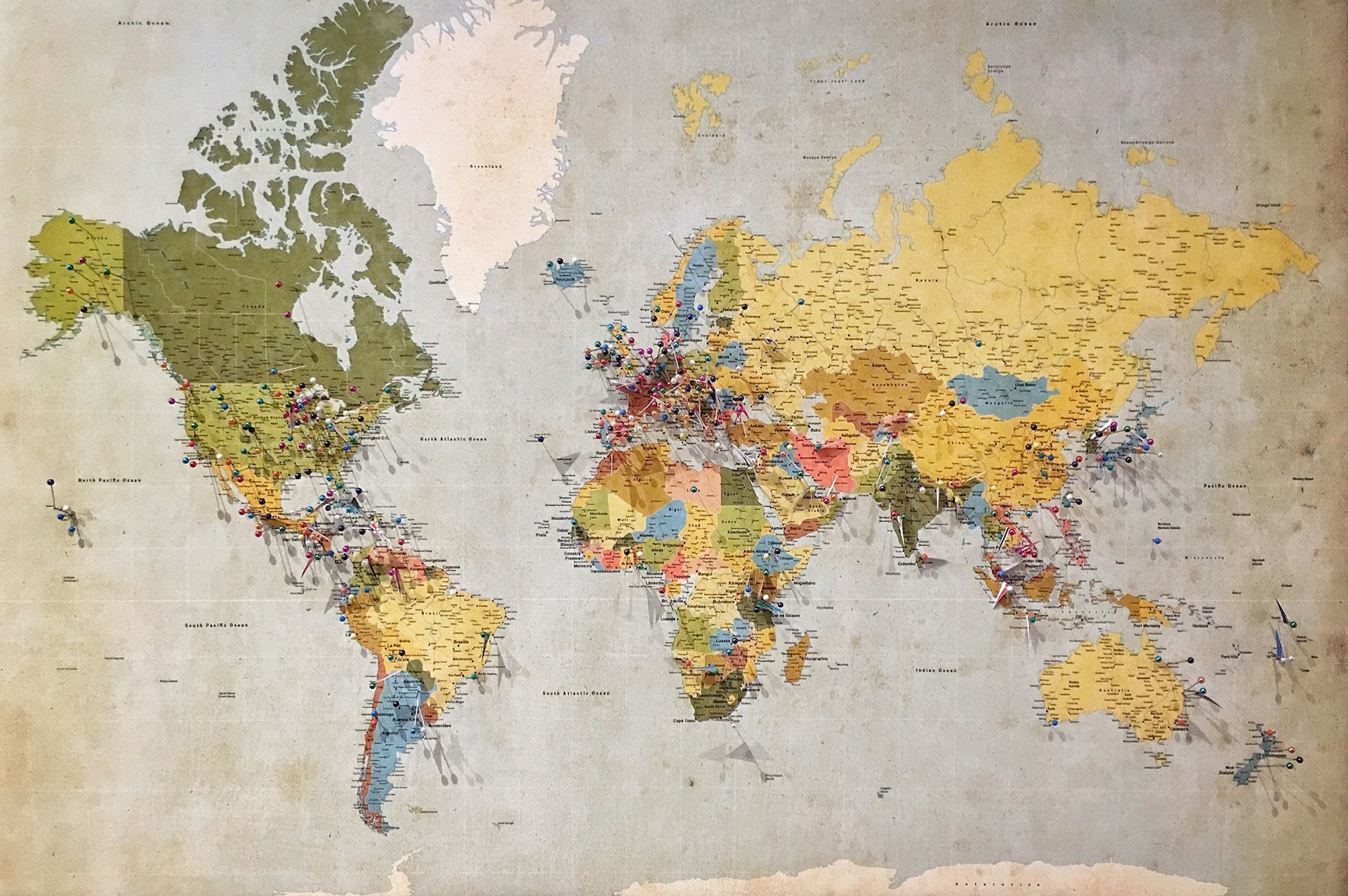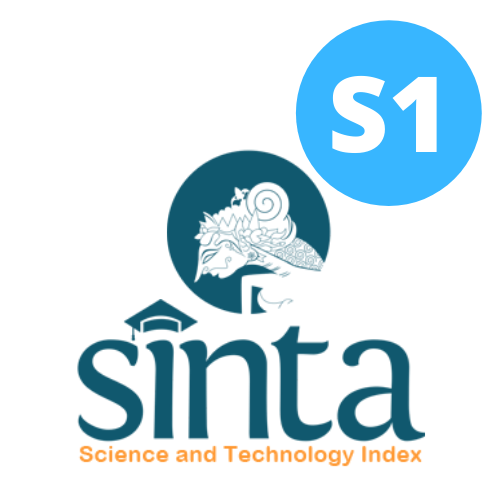Global Trend of Stunting in The Last Decade: A Bibliometric Analysis
Tren Global Stunting dalam Satu Dekade Terakhir: Analisis Bibliometrik

Downloads
Background: Stunting is a growth and development problem in children caused by chronic malnutrition and disease. There is no bibliometric analysis related to stunting globally and simultaneously using metadata from GS (Google Scholar) and Scopus on Vosviewer visualization from 2012 to 2022.
Objectives: To study the trends in research on stunting through a bibliometric analysis of the widely used GS and Scopus databases.
Methods: This method was used to investigate and evaluate a large amount of scientific data on stunting, revealing the intricacies of the evolution and novelties related to stunting over a decade (2012-2022).
Discussions: Stunting studies have increased over the last decade (2012-2022). The authors most cited based on the Scopus database are Prendergast & Humphrey. The authors most cited based on the GS database is de Onis & Branca. The productive author based on GS is T Siswati from Indonesia. The top numbers one influential author based on Scopus are M. De Onis and P. Svefors. The total number one source article based on Scopus and GS is Plos One. PH Nguyen, P Menon, and VM Aguayo are the three authors who have co-authored the most documents related to stunting in the past decade based on VosViewer visualizations. Based on the results of the VosViewer visualization, six significant clusters were also discussed: review, Inequality, Ethiopia, anemia, trial, and Infant.
Conclusions: Stunting prevention in areas or countries with acute stunting needs more detail from governments and WHO. We recommend that future research on the pattern of appropriate policies to prevent stunting be carried out.
WHO. WHO Global Nutrition Targets 2025: Stunting Policy Brief. Econ. Hum. Biol. 3, (2014).
WHO. Stunting prevalence among children under 5 years of age (%) (model-based estimates). Glob. Heal. Obs. Data Repos. 35 (2020).
WHO. WHO Child Grow Th Standards and the Identification of Severe Acute Malnutrition in Infants and Children: A Joint Statement. (2009).
Nations, U. The State of the World’s Children 2013: Children with Disabilities. (2013).
Komedi, K. Research Trend of Government Policy on Stunting Intervention: A Bibliometric Review. J. Arajang 5, (2022).
Novi Yulianti, Ulpawati, U. & Susanti, S. Analisis Bibliometrik Determinan Kejadian Stunting Pada Balita. J. Ris. Rumpun Ilmu Kesehat. 1, 120–129 (2022).
Ijaiya, M. A., Anjorin, S. & Uthman, O. A. A Bibliometric Analysis of Childhood Malnutrition Research Productivity in Africa over a Twenty-Year Period (1999-2019). J. Biosci. Med. 09, 40–54 (2021).
Saputra, T., Zuhdi, S., Affrian, R., Sufi, W. & Harahap, J. R. Bibliometric Studies and Public Administration Research Potential on Stunting Problems. J. Manaj. Pelayanan Publik 06, (2023).
Deda, Y. N., Disnawati, H., Ekawati, R. & Suprapto, N. Research trend on dyscalculia by bibliometric analysis during 2017-2022. Int. J. Eval. Res. Educ. 13, 69 (2024).
Deda, Y. N., Disnawati, H., Tamur, M. & Rosa, M. Global trend of ethnomathematics studies of the last decade: A bibliometric analysis. Infin. J. 13, 233–250 (2024).
Deda, Y. N. Bibliometric Analysis of Higher-Order Thinking Skills Based on. J. VARIDIKA 35, 127–136 (2023).
Wu, Y., Cheng, Y., Yang, X., Yu, W. & Wan, Y. Dyslexia: A Bibliometric and Visualization Analysis. Front. Public Heal. 10, 1–15 (2022).
Espina, E., Marbán, J. M. & Maroto, A. A retrospective look at the research on dyscalculia from a bibliometric approach. Rev. Educ. 2022, 201–229 (2022).
Deda, Y. N., Disnawati, H. & Daniel, O. Research Trends on Lesson Study Based on Google Scholar and Scopus Database: a Bibliometric Analysis. 35, 54–75 (2023).
van Eck, N. J. & Waltman, L. Manual for VOSviewer version 1.6.18. Leiden: Univeristeit Leiden (2022) doi:http://www.vosviewer.com/documentation/Manual_VOSviewer_1.6.1.pdf.
Prendergast, A. J. & Humphrey, J. H. The stunting syndrome in developing countries. Paediatr. Int. Child Health 34, (2014).
De Onis, M., Blössner, M. & Borghi, E. Prevalence and trends of stunting among pre-school children, 1990-2020. Public Health Nutr. 15, (2012).
Hoddinott, J., Alderman, H., Behrman, J. R., Haddad, L. & Horton, S. The economic rationale for investing in stunting reduction. Matern. Child Nutr. 9, (2013).
Danaei, G. et al. Risk Factors for Childhood Stunting in 137 Developing Countries: A Comparative Risk Assessment Analysis at Global, Regional, and Country Levels. PLoS Med. 13, (2016).
De Onis, M. et al. The world health organization’s global target for reducing childhood stunting by 2025: Rationale and proposed actions. Matern. Child Nutr. 9, (2013).
de Onis, M. & Branca, F. Childhood stunting: A global perspective. Maternal and Child Nutrition vol. 12 at https://doi.org/10.1111/mcn.12231 (2016).
Wessells, K. R. & Brown, K. H. Estimating the Global Prevalence of Zinc Deficiency: Results Based on Zinc Availability in National Food Supplies and the Prevalence of Stunting. PLoS One 7, (2012).
Stewart, C. P., Iannotti, L., Dewey, K. G., Michaelsen, K. F. & Onyango, A. W. Contextualising complementary feeding in a broader framework for stunting prevention. Matern. Child Nutr. 9, (2013).
Deda, Y. N., Disnawati, H. & Daniel, O. Research Trends on Lesson Study Based on Google Scholar and Scopus Database: a Bibliometric Analysis. J. VARIDIKA 35, 33–53 (2023).
Deda, Y. N. & Disnawati, H. A Decade of Research Design Studies: A Bibliometric Analysis (2012-2022). Bull. Pedagog. Res. 4, 1–12 (2024).
Wahyuningsih, W. et al. Stunting Prevention and Control Program to Reduce the Prevalence of Stunting: Systematic Review Study. Open Access Maced. J. Med. Sci. 10, (2022).
Suhardin, S. et al. Social-cultural aspect of stunting: A systematic review. Int. J. Psychosoc. Rehabil. 24, (2020).
Gassara, G. & Chen, J. Household food insecurity, dietary diversity, and stunting in sub-saharan africa: A systematic review. Nutrients 13, (2021).
Mediani, H. S., Hendrawati, S., Pahria, T., Mediawati, A. S. & Suryani, M. Factors Affecting the Knowledge and Motivation of Health Cadres in Stunting Prevention Among Children in Indonesia. J. Multidiscip. Healthc. 15, (2022).
Yunitasari, E., Pradanie, R., Arifin, H., Fajrianti, D. & Lee, B. O. Determinants of stunting prevention among mothers with children aged 6–24 months. Open Access Maced. J. Med. Sci. 9, (2021).
Bukit, D. S., Keloko, A. B. & Ashar, T. Father’s Support and Mother’s Behavior in Stunting Prevention Efforts. J. Heal. Sci. Prev. 5, (2021).
Azizah, A. M., Nurmala, I. & Devy, S. R. The Effect of Mother’s Educational Level and Stunting Incidence on Toddler: A Meta-analysis. Amerta Nutr. 6, (2022).
Givani, C. L. Factors of Stunting from Mother’s Pregnancy to Toddler Under 59 Months-Old. … J. Multidiscip. Sci. (2022).
Susyani, S. et al. Maternal Risk Factor on Incidence of Stunting in South Sumatera. Open Access Maced. J. Med. Sci. 10, (2022).
Khasanah, U. et al. Family Empowerment Model on Sensitive Nutrition Intervention for Stunting. Int. J. Adv. Heal. Sci. Technol. 2, (2022).
Nuraini, I., Iswati, R. S. & Aisyah. Intervention of Stunting Aged 0-59 Months Reviewing from Nutrition. J. Pharm. Negat. Results 13, (2022).
Hadi, H. et al. Exclusive breastfeeding protects young children from stunting in a low‐income population: A study from eastern indonesia. Nutrients 13, (2021).
Louis, S. L., Mirania, A. N. & Yuniarti, E. The Relationship Between Exclusive Breastfeeding with Stunting on Toddles Children. Matern. Neonatal Heal. J. 3, (2022).
Ekholuenetale, M., Okonji, O. C., Nzoputam, C. I. & Barrow, A. Inequalities in the prevalence of stunting, anemia and exclusive breastfeeding among African children. BMC Pediatr. 22, (2022).
Sari, A. L. Exclusive Breastfeeding as an Effort to Prevent Stunting in Toddlers. NeuroQuantology 20, (2022).
Rilyani, R. Exclusive Breastfeeding with the Incidence of Stunting in Toddlers. J. Ilm. Kesehat. Sandi Husada (2021) doi:10.35816/jiskh.v10i1.489.
Dewey, K. G. & Begum, K. Long-term consequences of stunting in early life. Matern. Child Nutr. 7, (2011).
Vale, D. et al. Social Determinants of Obesity and Stunting among Brazilian Adolescents: A Multilevel Analysis. Nutrients 14, (2022).
Sebsbie, A., Minda, A. & Ahmed, S. Co-existence of overweight/obesity and stunting: it’s prevalence and associated factors among under - five children in Addis Ababa, Ethiopia. BMC Pediatr. 22, (2022).
Rasheed, H. et al. Estimating the health burden of aflatoxin attributable stunting among children in low income countries of Africa. Sci. Rep. 11, (2021).
Menon, P., Headey, D., Avula, R. & Nguyen, P. H. Understanding the geographical burden of stunting in India: A regression-decomposition analysis of district-level data from 2015–16. Matern. Child Nutr. 14, (2018).
Gaire, S., Delbiso, T. D., Pandey, S. & Guha-Sapir, D. Impact of disasters on child stunting in Nepal. Risk Manag. Healthc. Policy 9, (2016).
Mohammed, S. H., Muhammad, F., Pakzad, R. & Alizadeh, S. Socioeconomic inequality in stunting among under-5 children in Ethiopia: A decomposition analysis. BMC Res. Notes 12, (2019).
Aguayo, V. M. & Menon, P. Stop stunting: Improving child feeding, women’s nutrition and household sanitation in South Asia. Matern. Child Nutr. 12, (2016).
Mutunga, M., Frison, S., Rava, M. & Bahwere, P. The forgotten agenda of wasting in Southeast Asia: Burden, determinants and overlap with stunting: A review of nationally representative cross-sectional demographic and health surveys in six countries. Nutrients 12, (2020).
Van Tuijl, C. J. W., Madjdian, D. S., Bras, H. & Chalise, B. Sociocultural and economic determinants of stunting and thinness among adolescent boys and girls in Nepal. J. Biosoc. Sci. (2020) doi:10.1017/S0021932020000358.
Chowdhury, T. R. et al. Factors associated with stunting and wasting in children under 2 years in Bangladesh. Heliyon 6, (2020).
Ashebir Kebede, W. & Yimer Ayele, B. Magnitude of Stunting and Associated Factors among Adolescent Students in Legehida District, Northeast Ethiopia. J. Nutr. Metab. 2021, (2021).
Sserwanja, Q., Kamara, K., Mutisya, L. M., Musaba, M. W. & Ziaei, S. Rural and Urban Correlates of Stunting Among Under-Five Children in Sierra Leone: A 2019 Nationwide Cross-Sectional Survey. Nutr. Metab. Insights 14, (2021).
Modern, G., Sauli, E. & Mpolya, E. Correlates of diarrhea and stunting among under-five children in Ruvuma, Tanzania; a hospital-based cross-sectional study. Sci. African 8, (2020).
Briend, A., Khara, T. & Dolan, C. Wasting and stunting-similarities and differences: Policy and programmatic implications. Food Nutr. Bull. 36, (2015).
Ramdani, M. A. & Abdullah, S. Application of partitioning around medoids cluster for analysis of stunting in 100 priority regencies in Indonesia. in Journal of Physics: Conference Series vol. 1722 (2021).
Upadhyay, A. K. & Srivastava, S. Effect of pregnancy intention, postnatal depressive symptoms and social support on early childhood stunting: Findings from India. BMC Pregnancy Childbirth 16, (2016).
Ahmed, K. Y., Agho, K. E., Page, A., Arora, A. & Ogbo, F. A. Mapping geographical differences and examining the determinants of childhood stunting in ethiopia: A bayesian geostatistical analysis. Nutrients 13, (2021).
Woodruff, B. A. et al. Determinants of stunting reduction in Ethiopia 2000 – 2011. Matern. Child Nutr. 13, (2017).
Paudel, R., Pradhan, B., Wagle, R. R., Pahari, D. P. & Onta, S. R. Risk factors for stunting among children: A community based case control study in Nepal. Kathmandu Univ. Med. J. 10, (2012).
Eshete Tadesse, S., Chane Mekonnen, T. & Adane, M. Priorities for intervention of childhood stunting in northeastern Ethiopia: A matched case-control study. PLoS One 15, (2020).
Huey, S. L. & Mehta, S. Stunting: The Need for Application of Advances in Technology to Understand a Complex Health Problem. EBioMedicine vol. 6 at https://doi.org/10.1016/j.ebiom.2016.03.013 (2016).
Iversen, P. O., Ngari, M., Westerberg, A. C., Muhoozi, G. & Atukunda, P. Child stunting concurrent with wasting or being overweight: A 6-y follow up of a randomized maternal education trial in Uganda. Nutrition 89, (2021).
Yang, Q. et al. Household food insecurity, dietary diversity, stunting, and anaemia among left-behind children in poor rural areas of China. Int. J. Environ. Res. Public Health 16, (2019).
Owino, V. et al. Environmental enteric dysfunction and growth failure/stunting in global child health. Pediatrics 138, (2016).
Kwami, C. S., Godfrey, S., Gavilan, H., Lakhanpaul, M. & Parikh, P. Water, sanitation, and hygiene: Linkages with stunting in rural Ethiopia. Int. J. Environ. Res. Public Health 16, (2019).
Rah, J. H. et al. Household sanitation and personal hygiene practices are associated with child stunting in rural India: A cross-sectional analysis of surveys. BMJ Open vol. 5 at https://doi.org/10.1136/bmjopen-2014-005180 (2015).
Humphrey, J. H. et al. Independent and combined effects of improved water, sanitation, and hygiene, and improved complementary feeding, on child stunting and anaemia in rural Zimbabwe: a cluster-randomised trial. Lancet Glob. Heal. 7, (2019).
Rah, J. H., Sukotjo, S., Badgaiyan, N., Cronin, A. A. & Torlesse, H. Improved sanitation is associated with reduced child stunting amongst Indonesian children under 3 years of age. Matern. Child Nutr. 16, (2020).
Zaidi, S. et al. Food supplements to reduce stunting in Pakistan: A process evaluation of community dynamics shaping uptake. BMC Public Health 20, (2020).
Tamirat, K. S., Tesema, G. A. & Tessema, Z. T. Determinants of maternal high-risk fertility behaviors and its correlation with child stunting and anemia in the East Africa region: A pooled analysis of nine East African countries. PLoS One 16, (2021).
Maravilla, J. C., Betts, K., Adair, L. & Alati, R. Stunting of children under two from repeated pregnancy among young mothers. Sci. Rep. 10, (2020).
Hartotok, H., Absori, A., Dimyati, K., Santoso, H. & Budiono, A. Stunting prevention policy as a form of child health rights legal protection. Open Access Maced. J. Med. Sci. 9, (2021).
Syafrisar Meri Agritubella & Fathul Jannah. Prevention of Stunting Through Nutrition Education on Pregnant Women. J. Endur. 7, (2022).
Sukmawati, S., Hermayanti, Y., Fadlyana, E. & Mediani, H. S. Stunting prevention with education and nutrition in pregnant women: A review of literature. Open Access Macedonian Journal of Medical Sciences vol. 9 at https://doi.org/10.3889/oamjms.2021.7314 (2021).
Damanik, S. M., Wanda, D. & Hayati, H. Feeding practices for toddlers with stunting in Jakarta: A case study. Pediatr. Rep. 12, (2020).
Atik, A. P. W. Gestational Age, Exclusive Breastfeeding, Attitude Complementary Foods Associated with Stunting Infants. Int. J. Nurs. Heal. Serv. 4, (2021).
Elfeshawy, R., Ahmed El Sobky, F., Abdallah Mohamed Amer, S. & Hussin Ali Alzahrani., S. The effect of Mothers’ Nutritional education based on health belief model to prevent stunting among young children. Egypt. J. Heal. Care 13, (2022).
Liza Munira, S. Disampaikan pada Sosialisasi Kebijakan Intervensi Stunting Jakarta, 3 Februari 2023 Hasil Survei Status Gizi Indonesia (SSGI) 2022. 77–77 (2023).
Copyright (c) 2024 Amerta Nutrition

This work is licensed under a Creative Commons Attribution-ShareAlike 4.0 International License.
AMERTA NUTR by Unair is licensed under a Creative Commons Attribution-ShareAlike 4.0 International License.
1. The journal allows the author to hold the copyright of the article without restrictions.
2. The journal allows the author(s) to retain publishing rights without restrictions
3. The legal formal aspect of journal publication accessibility refers to Creative Commons Attribution Share-Alike (CC BY-SA).
4. The Creative Commons Attribution Share-Alike (CC BY-SA) license allows re-distribution and re-use of a licensed work on the conditions that the creator is appropriately credited and that any derivative work is made available under "the same, similar or a compatible license”. Other than the conditions mentioned above, the editorial board is not responsible for copyright violation.












































